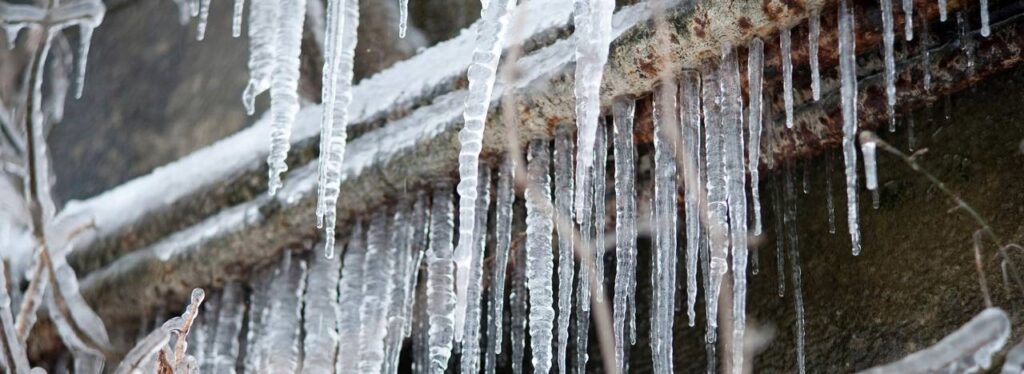Protect Against Frozen Pipes in Winter: Pro Strategies
Protect Against Frozen Pipes in Winter: Pro Strategies
Blog Article
Everyone maintains their own way of thinking involving Winter Plumbing Precautions: Preventing Frozen Pipes.

Cold weather can damage your plumbing, especially by freezing pipelines. Right here's just how to avoid it from taking place and what to do if it does.
Introduction
As temperature levels decline, the risk of icy pipes increases, possibly bring about costly repairs and water damage. Recognizing exactly how to stop icy pipelines is essential for home owners in cold environments.
Prevention Tips
Insulating vulnerable pipes
Cover pipes in insulation sleeves or make use of warm tape to secure them from freezing temperatures. Concentrate on pipes in unheated or external locations of the home.
Home heating strategies
Maintain interior spaces effectively warmed, particularly areas with pipes. Open closet doors to permit warm air to distribute around pipes under sinks.
How to identify icy pipelines
Search for decreased water circulation from faucets, uncommon smells or noises from pipelines, and noticeable frost on revealed pipelines.
Long-Term Solutions
Architectural modifications
Think about rerouting pipes far from exterior wall surfaces or unheated locations. Include additional insulation to attic rooms, basements, and crawl spaces.
Updating insulation
Purchase top quality insulation for pipes, attics, and wall surfaces. Proper insulation aids keep constant temperatures and lowers the danger of frozen pipelines.
Securing Outdoor Plumbing
Garden tubes and outside taps
Disconnect and drain garden tubes before winter season. Set up frost-proof spigots or cover exterior taps with protected caps.
Recognizing Icy Pipes
What triggers pipes to ice up?
Pipes freeze when exposed to temperature levels below 32 ° F (0 ° C) for expanded periods. As water inside the pipelines ices up, it broadens, taxing the pipe walls and potentially creating them to break.
Risks and damages
Frozen pipelines can result in water disruptions, home damages, and pricey repair services. Ruptured pipes can flood homes and create extensive architectural damage.
Signs of Frozen Water Lines
Recognizing frozen pipelines early can avoid them from bursting.
What to Do If Your Pipes Freeze
Immediate activities to take
If you presume icy pipes, maintain faucets open to ease stress as the ice melts. Use a hairdryer or towels taken in warm water to thaw pipes slowly.
Verdict
Stopping frozen pipes requires aggressive steps and quick responses. By comprehending the reasons, indications, and preventive measures, house owners can secure their pipes throughout cold weather.
5 Ways to Prevent Frozen Pipes
Drain Outdoor Faucets and Disconnect Hoses
First, close the shut-off valve that controls the flow of water in the pipe to your outdoor faucet. Then, head outside to disconnect and drain your hose and open the outdoor faucet to allow the water to completely drain out of the line. Turn off the faucet when done. Finally, head back to the shut-off valve and drain the remaining water inside the pipe into a bucket or container. Additionally, if you have a home irrigation system, you should consider hiring an expert to clear the system of water each year.
Insulate Pipes
One of the best and most cost-effective methods for preventing frozen water pipes is to wrap your pipes with insulation. This is especially important for areas in your home that aren’t exposed to heat, such as an attic. We suggest using foam sleeves, which can typically be found at your local hardware store.
Keep Heat Running at 65
Your pipes are located inside your walls, and the temperature there is much colder than the rest of the house. To prevent your pipes from freezing, The Insurance Information Institute suggests that you keep your home heated to at least 65 degrees, even when traveling. You may want to invest in smart devices that can keep an eye on the temperature in your home while you’re away.
Leave Water Dripping
Moving water — even a small trickle — can prevent ice from forming inside your pipes. When freezing temps are imminent, start a drip of water from all faucets that serve exposed pipes. Leaving a few faucets running will also help relieve pressure inside the pipes and help prevent a rupture if the water inside freezes.
Open Cupboard Doors
Warm your kitchen and bathroom pipes by opening cupboards and vanities. You should also leave your interior doors ajar to help warm air circulate evenly throughout your home.

Hopefully you enjoyed our section about How To Avoid Freezing Pipes. Thank you so much for spending some time to read through our piece of content. Sharing is caring. You won't know, you might be doing someone a favor. Thanks a bunch for your time. Kindly come by our site back soon.
Call Today Report this page